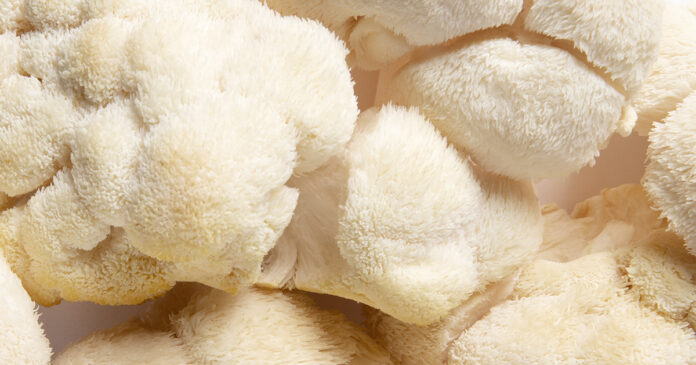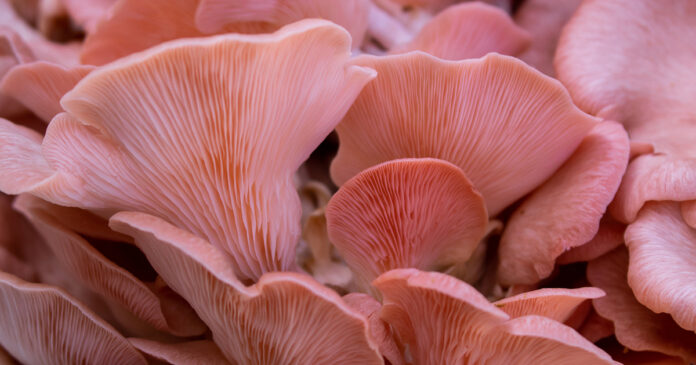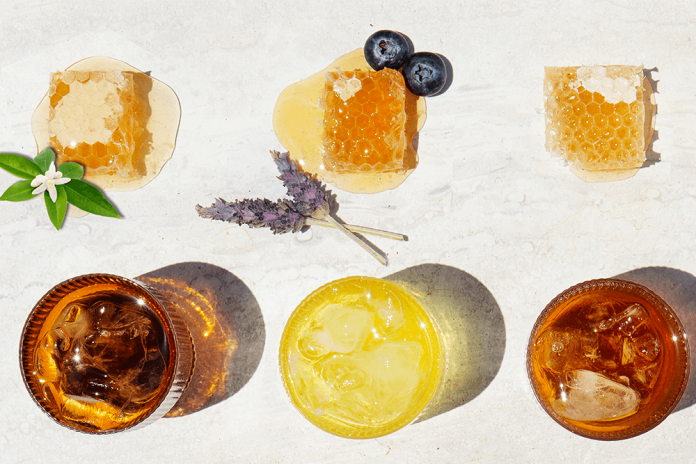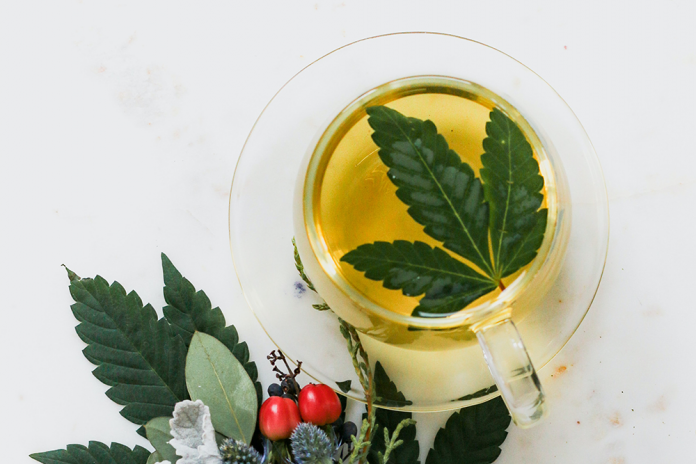White tea is known as the most delicate and smoothest of all true teas.
But just because it’s subtle doesn’t mean it lacks for health benefits. In fact, organic white tea may have higher antioxidant content than any other tea.
Keep reading to learn all the reasons you should consider including white tea in your daily tea rotation.
Meet White Tea
White tea gets its name from the fine white hairs on young, unopened tea buds. It is indeed a “true tea” – meaning it’s derived from the Camellia sinensis plant, unlike herbal teas or tisanes.
Compared to other types of tea, white tea leaves are younger and minimally processed. The liquid made from brewing the young tea leaves and unopened buds is a pale yellow hue, lighter-colored than that of oxidized teas, which usually produce a dark green, golden, or reddish-brown liquid.
White tea is usually dried after harvest without steaming or other oxidation, whereas green tea is roasted or baked. Because of its minimal processing (also known as withering), it typically has higher levels of antioxidants than green or black tea.
And unlike other true teas, white tea may only date back a few hundred years. The first known cultivation of white tea occurred in the Fujian Province of China , in the 1700s. That’s when the practice of harvesting tender, white-haired buds and young leaves and processing them with minimal oxidation first appeared.
These Da Bai and Da Hao white teas were too fragile and delicate to transport far, so they weren’t widely traded until advances in storage and logistics occurred.
Today, Fujian Province is still the premier white tea producer. But Guangxi Province in China as well as Nepal, Thailand, Taiwan, Sri Lanka, and India also produce white tea to meet international demand.
Popular types of white tea today include Fujian Silver Needle White Tea, said to come from the original white tea cultivars, and Bai Mu Dan or White Peony, white tea that includes more young leaves in addition to unopened tea buds.
The delicate flavor profile of white tea can vary, but it’s universally mellow and smooth. Compared to green tea or matcha, it’s typically sweeter and less vegetal, with more floral or fruity notes.
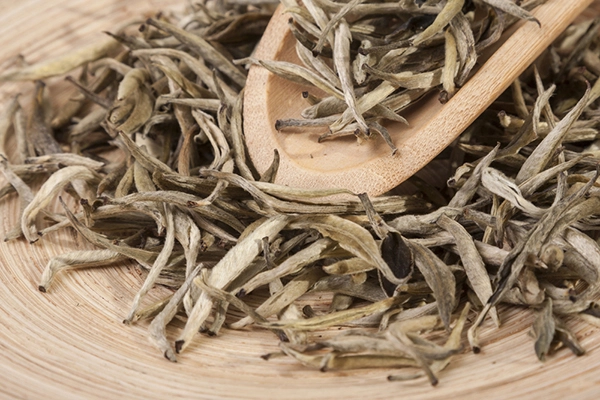
4 Reasons White Tea is Good for Your Health
1. High in Catechins
Catechins are the antioxidant powerhouses that helped put Camellia sinensis on the map of modern science, and with good reason.
Catechins support your health in a variety of ways, including supporting your body against free radicals and the oxidative damage and other negative effects they can cause. .
White tea has the highest catechin content of all true teas, and may contain up to 37% total catechin content (TCC) by weight when dry (1).
(Note that in a 2010 study, the total catechin content of various white tea brands differed by over 20-fold, which is one reason it’s vital to select high quality tea, and preferably brew loose leaves rather than tea bags) (1).
Here are some of the most important catechins in white tea:
- Epicatechin (EC)
- Epigellocatechin (EGC)
- Epicatechin-3-gallate (ECG)
- Epigallocatechin gallate (EGCG)
Scientists think catechins like EGCG are responsible for many of the unique health benefits of white tea.
Research suggests they’re the reason white tea helps support a healthy circulatory system, support healthy cholesterol levels, support cellular health, support your body’s natural anti-inflammatory abilities, support brain health, and support an antimicrobial environment in your body (1).
Not only that, catechins may also help support your gut health by acting as prebiotics. Prebiotic compounds act as food for probiotic (“good”) bacteria in your gut (2).
2. Rich in Flavonoids
You’ve just learned about catechins, but they’re far from the only healthy antioxidants in white tea.
Flavonoids are a broad category of antioxidants that actually includes catechins. In fact, all catechins are flavonoids, but not all flavonoids are catechins. Got it?
These compounds are characterized by a yellow color and their unique chemical structure. Flavanols, a type of flavonoid that occurs naturally in white tea, also contain a ketone structure.
Here are the most common white tea flavonoids and flavonols (3):
- Ellagic acid
- Gallic acid
- Quercetin
- Kaempferol
- Astragalin
- Quercitrin
- Myricetin
If you’re familiar with any of the above antioxidants, you may have noticed that many of them also occur in other plants, not just the tea plant. Ellagic acid is found in pomegranates, and citrus peels are high in quercetin, for example.
And as with eating healthy fruits and vegetables, the flavonoids you get from the consumption of white tea may help support your body’s natural anti-inflammatory pathways, support a balanced immune system, and support cellular health (4)(5)(6).
3. May Have Tannins
Tannins are yet another phytochemical in tea that have antioxidant properties.
They’re actually a type of catechin, but with some key differences in their chemistry formula. Mainly, they contain more hydroxyl groups–up to 20, which lend them a higher molecular weight than other catechins (7).
Because of this, tannins are also highly reactive, and can form complexes with carbohydrates, lipids, and proteins (7).
A special type of tannin called proanthocyanidins may support heart health, support healthy blood pressure, and support cellular health by protecting cells from damage (8).
While black and oolong teas contain more tannins than white tea, some white tea varieties do contain tannins and proanthocyanidins (9).
On the other hand, not everyone enjoys tannins. They can contribute to the bitter taste of tea, and may cause minor side effects like an upset tummy if you drink them on an empty stomach.
They’re also less soluble in water than other antioxidants at normal brewing temperatures for white tea (under 180 degrees Fahrenheit or about 82 degrees Celsius).
However, if you rebrew your white tea several times at increasing temperatures, you may get a respectable dose of healthy tannins and proanthocyanidins!
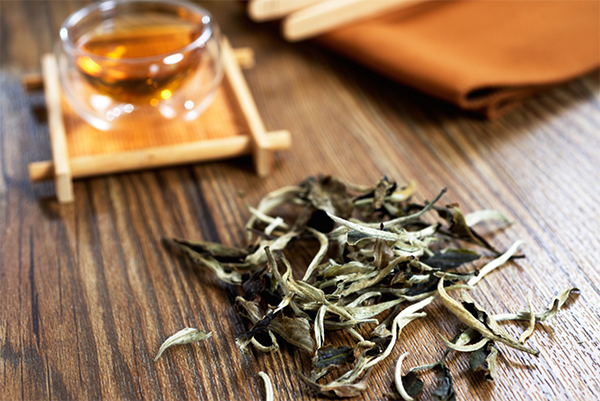
4. Balanced in Caffeine and L-Theanine
White tea may be lower in caffeine than its more-oxidized counterparts (10). That’s a good thing if you want to avoid the jitters associated with higher doses of caffeine.
But equally important, white tea is high in the naturally-occurring amino acid L-theanine (11). L-theanine appears to have some remarkable effects on mood, performance, and brain health – and it’s only found in teas from the Camellia sinensis plant.
A 2010 study found the combination of L-theanine and caffeine supported participants’ cognitive performance and alertness (12).
And a separate study found L-theanine (when taken without caffeine) may support healthy sleep (13).
Researchers have also found this amino acid may support heart health, brain health, healthy blood pressure levels, stress relief, and liver health (14).
Because of its low-to-moderate caffeine content and high L-theanine content, white tea is the perfect tea for an afternoon boost, or as a morning tea for people who are extra-sensitive to caffeine.
4 Benefits of White Tea in Traditional Chinese Medicine
1. Yin Attributes
Taoism, upon which many key ideas from Traditional Chinese Medicine (TCM) are based, views our bodies as having a balance between yin and yang.
Roughly speaking, yin comprises all that is cool, damp, and dark. Yang represents warm, dry, and luminescent properties.
TCM practitioners strive to rebalance these properties when needed, as well as regulate and promote the flow of qi or life-energy.
One way to do this is to imbibe plants, foods, or other medicines that have the necessary property you are lacking.
For example, in the paradigm of traditional Chinese medicine, someone with excess yang, which could manifest as dry skin, feeling restless, feeling hot, constipation or not urinating enough, would benefit from drinking white tea due to its ability to promote yin in the body.
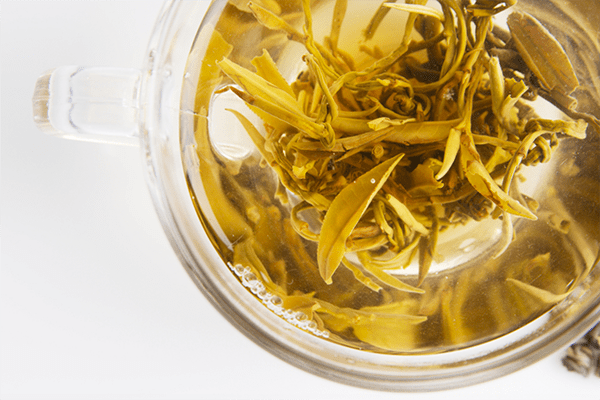
2. Cha Qi
Cha Qi translates to the life-force of tea.
As qi is one of the underpinnings of traditional Chinese medicine, the life-force of tea is an important consideration from a TCM perspective. (Qi also means “energy,” “breath,” and “everything.”)
Cha Qi is related to, but not synonymous with, the potency of the tea as well as its caffeine and L-theanine content. It includes all those things, but also how a given tea interacts with your own qi or life-force.
Tea can raise your qi if necessary, but can also calm you down if needed. That’s why monks have drunk tea for centuries, and why some people describe it as “meditation in a cup.”
Some people also describe the positive effects of abundant Cha Qi as “tea drunk.” They may describe their anecdotal experience as being relaxed, energized, animated, and talkative.
3. Cooling Properties
According to TCM, you must also take your environment into account when balancing yin and yang.
Cooling properties are a primary feature of yin substances like white tea, which makes them perfect for a hot day, or for times when you may get hot (such as during work or exercise).
Some people feel that even on a hot day, a warm cup of tea exhibits impressive cooling effects. But for best results, we recommend making the perfect iced tea using high-quality white tea for a guaranteed way to chill out!
4. Supports Digestion
From putting together the yin attributes and cooling properties of tea, TCM also tells us that white tea is perfect for clearing internal heat from the body.
One source of internal heat can be foods we eat.
Specifically, in traditional Chinese medicine, fried, heavy, or greasy foods are considered “heating.”
They generate internal heat, resulting in discomfort. We’ve all been there!
Next time you indulge in fried or greasy foods, try drinking white tea an hour after you finish your meal.
And this is one area where Western medicine and TCM may agree.
According to science, white tea has a number of proven mechanisms that may be beneficial for supporting gut health, supporting the body’s anti-inflammatory mechanisms, and supporting your gut microbiome (15)(16).
Final Thoughts
While white tea has the highest antioxidant content, one type of tea is not necessarily better than the rest. All tea drinkers will find their favorite tea blends – but only by trying many varieties!
Despite coming from the same plant, white, green, fermented, and black teas all have different properties. That’s true from a modern scientific as well as a traditional Chinese medicine (TCM) perspective.
If you want a balance of all the remarkable health properties of various teas, you can diversify your selection, drinking different varieties regularly. We recommend steeping organic loose leaf tea or using tea crystals for best quality. White tea bags will provide a suboptimal flavor.
What are your favorite benefits and properties of white tea? Let us know in the comments!



